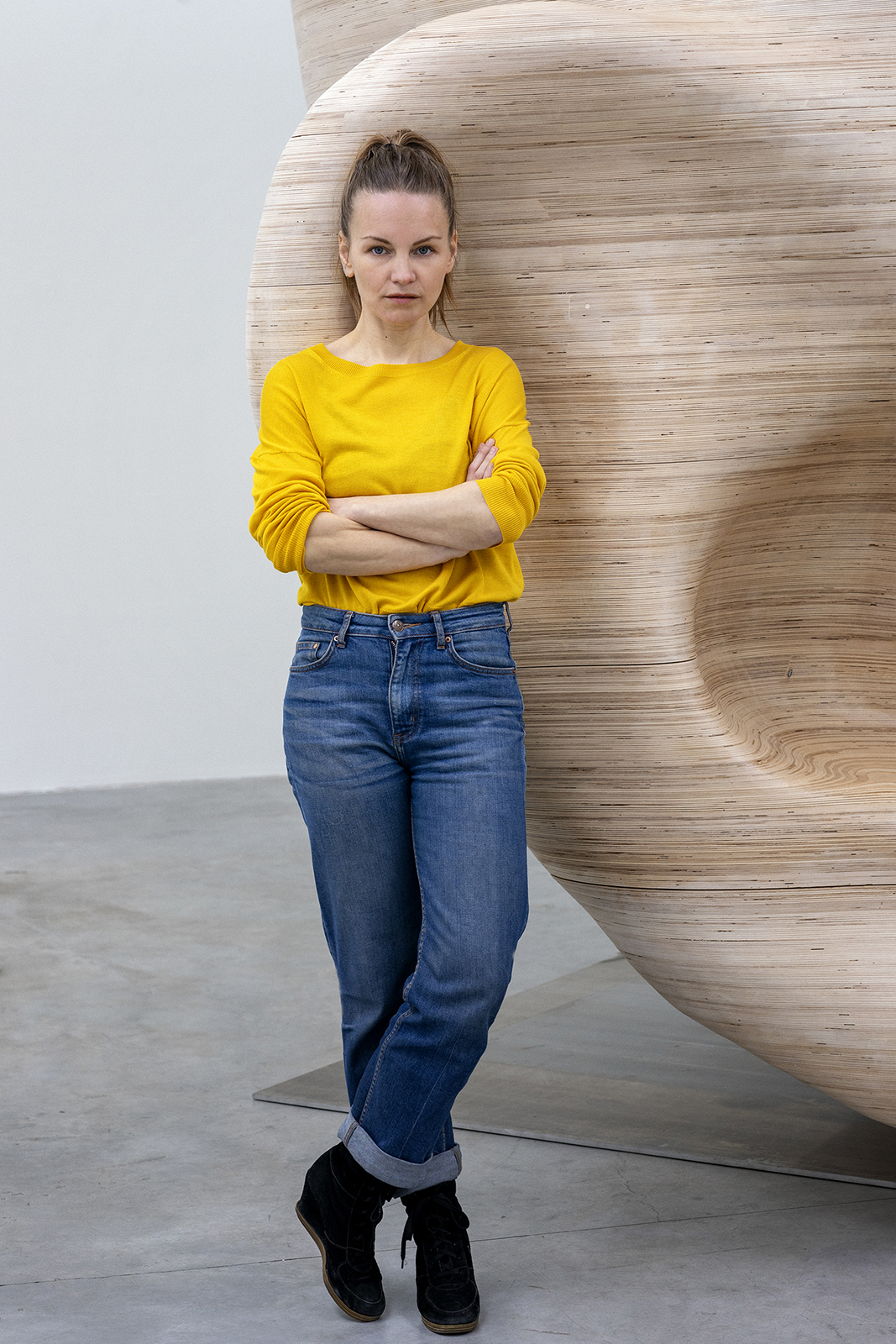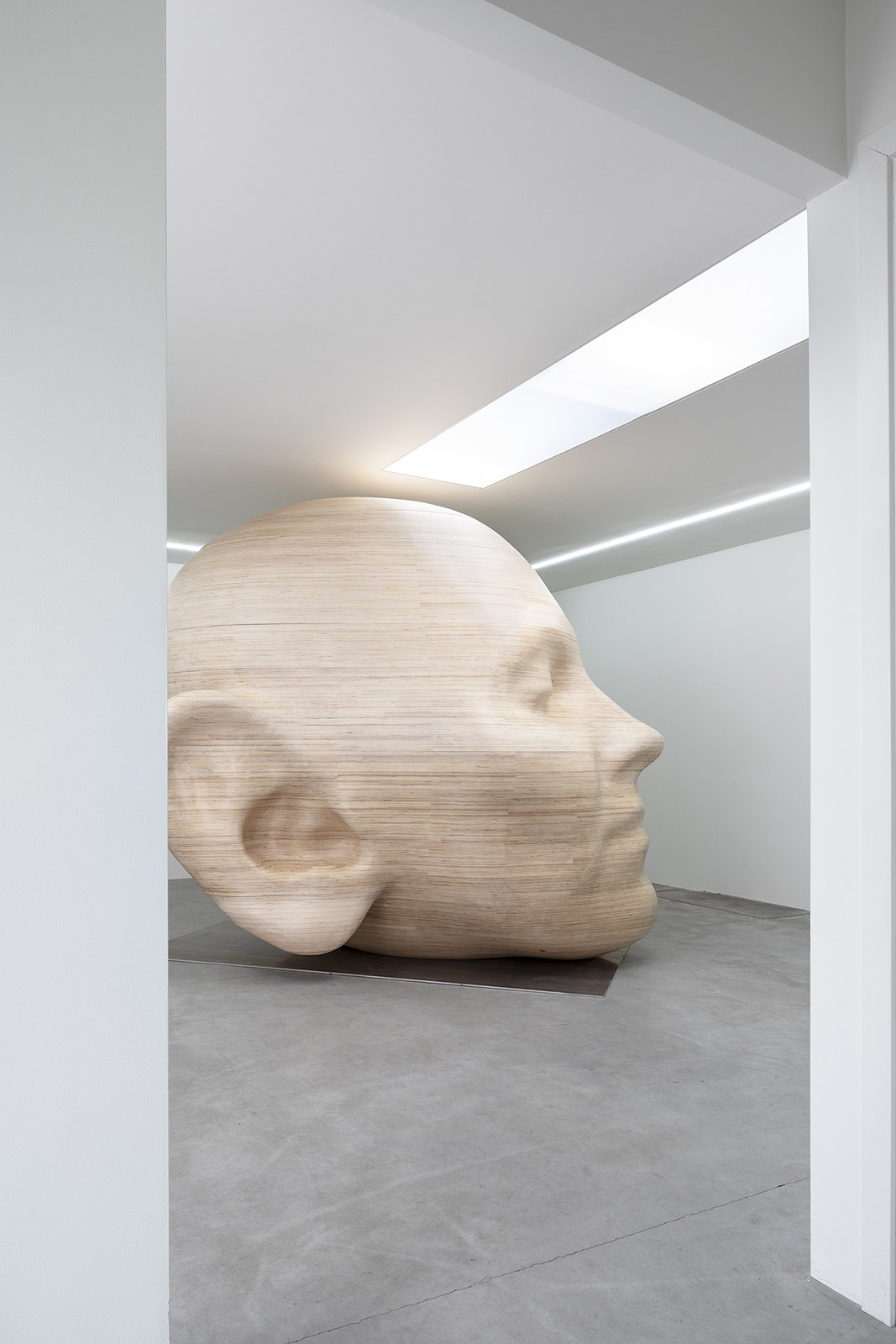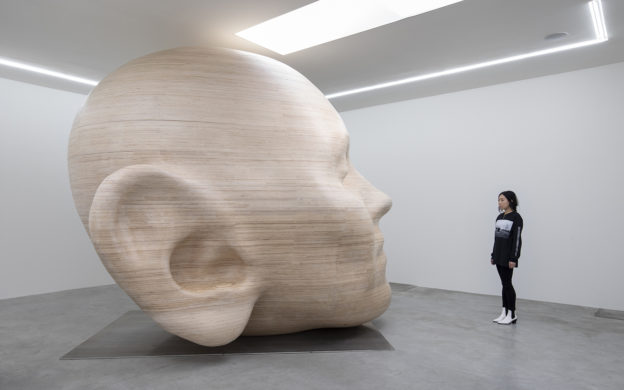Throughout a distinguished career, classical composer Louise Alenius has written music resonating with audiences of thousand-seat theaters. But two years ago, she felt compelled to reverse-engineer her creative process.
“I wrote a piece of music that made me want to build my own concert hall for it,” she reveals. “I had never built anything before; I had never made anything you could touch. But I had created a lot of theatre performances and I had visual ideas all the time, so it didn’t seem that different for me.”
Louise’s idea gained traction when Eighteen Gallery, located in Copenhagen’s Meatpacking District (Kødbyen), offered her the chance to create an installation. Over eight months, she and her team conceived a structure for single individuals to hear a recording of her music. The design would require that participants engage personally with the artwork, a conceptual approach Louise also took during a 2014 project called “Porøset.”
 |
 |
“I did 500 miniature performances at the Royal Theatre [Copenhagen] for one audience member at a time,” she says. “I like to create these experiences where we’re both a little insecure and don’t know what is going to happen. We kind of read each other but we don’t talk; we don’t necessarily communicate with our eyes. It’s just a really small meeting.”
Standing 3.5 meters high and weighing 2.5 tons, her installation, “Tête,” is impressive by any measure. Carved from light beech timber, the polished exterior follows the contours of a human head; inside, ridges cut into the concave walls produce an amphitheater effect.
Louise modeled “Tête’s” external appearance on her own facial features. “In the beginning, it wasn’t my own face; it was just a general head,” she recalls. “But when it came down to it, we needed a head to work from.” Later, she found this decision pivotal to her artistic practice.
“My ideas live very strongly inside my head,” she says. “They’re very vivid; they have no limits. But when you start making them happen, you have to compromise all the time. You have people saying, ‘This is not possible; this is too expensive.’ With this project, the whole point was to go all-in with an idea,” she explains. “If I had stopped at eighty percent because it’s a little too much to put your own face on a three-and-a-half-meter monument, then I would only be going halfway.”
 |
 |
Louise’s willingness to pursue creative impulses through “Tête” that her professional cohort might regard as aberrant interlaces with a broader discussion on self-censorship.
“In our time, I think we’re very concerned about not being utopian,” she says. “There’s this whole concern for being very rational and pragmatic – I think it has taken over; I think it has become far too strong an energy everywhere. There’s almost no space left for stupid ideas – bad ideas that never could work out. And in every way, I think this is a picture of a bad idea; an idea that should have been stopped.”
This contention may seem counter-intuitive, but Louise suggests her intimate artworks garner emotional responses not possible with large-scale productions.
“I’ve worked with some really good stage and film directors, and I see how hard they work on making people feel something,” she says. “It’s very difficult because these days we have so many ways to protect ourselves all the time. But once you get close to a person you don’t know, and you don’t know what the right thing is to do is – then we’re all so fragile.”
Louise continues, “you can’t do it with a thousand people at the same time; you can only do it one-by-one. But I love that. People sometimes ask, ‘Don’t you want to make something larger?’. For me, it’s not about the size. If it’s just one person every fifteen minutes, but it stays with them for ten years, I would much rather have that connection than play to a lot of people who later forget.”
With “Tête,” Louise deliberately set out to disavow accepted protocols of classical composition and performance. Without a stage or congregated audience, she let her ideas permeate several different disciplines, questioning the restrictions on her creativity in the process. Her resulting work exists as a vessel in which introspection takes precedence.
See “Tête” at Eighteen Gallery
Slagtehusgade 18c, Kødbyen, 1711 V
Opening Hours:
Weds – Fri 12:00 – 6:00 pm
Sat 12:00 – 4:00 pm
Sun & Mon Closed
Exhibition Dates:
5th – 27th April

